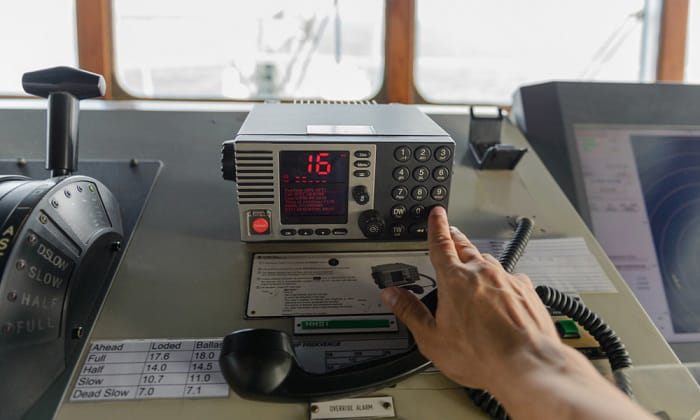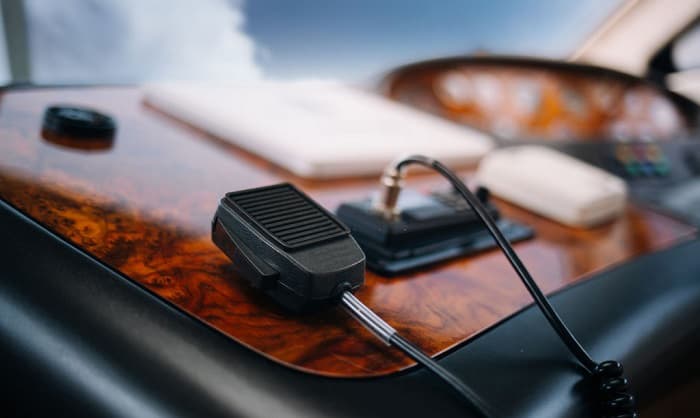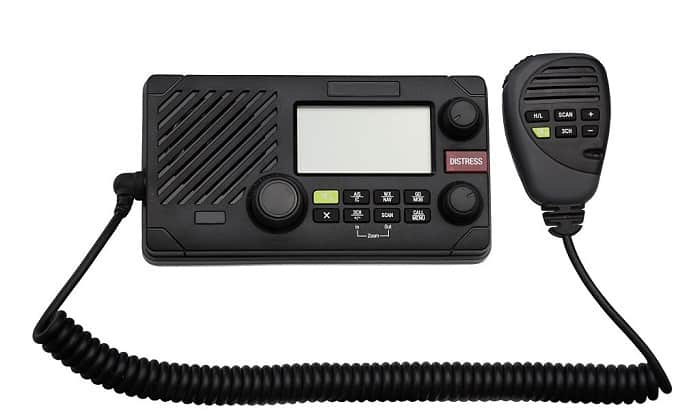For any boater, especially those who aim to experience a long cruising trip, having a good communication platform is a must. It will guarantee safety for yacht owners in emergency situations and provide weather or tsunami warnings timely and effectively.
Hence, marine single-side band radio has become a popular communicating equipment on ships thanks to its various functions and convenience while traveling by sea.
Therefore, it is necessary for boat owners to understand clearly how SSB radios work and operate., No one should encounter the terrifying scenario of the vessel and SSB radio breaking down in the middle of nowhere.
If you are looking for a beginner guideline about everything related to SSB radios, this article is perfect for you. This discussion on what are SSB radios will compile all basic knowledge about marine SSB radios to help you learn about this type of signal transporting system, including:
- Single sideband radio definition
- Basic components of SSB radio’s system
- Modulations using a single sideband system
- How do SSB radios function?
This knowledge will definitely support you in installing a SSB radio platform for your watercraft. Moreover, some further notices about SSB radios and tips to deal with them in real situations will be included throughout the post, so make sure to follow this until the end!
Table of Contents
What is SSB Radio? – A Basic Guideline
Single sideband radio, also known as SSB radio, is a method of communicating across long distances without the use of a registration or recurring expenses and tariffs. SSB’s functions are similar to FM or AM. SSB is an extremely effective way of superimposing your audio or other signals upon the radio wave before transmitting it.
A properly fitted SSB may provide ranges of over 4000 kilometers. These sorts of ranges rely on sound placement and are dependent on expertise, weather, and competence with devices.
1. SSB radio history and background
When it comes to critical maritime radio channels, SSB radios are a must-have. After World War II, the SSB radio was utilized as part of the maritime radio system. The issues produced by the AM (Amplitude Modulation) radio transmitter were the major motivation for the creation of the SSB radio network.
2. SSB radio’s pros and cons
One of SSB radios’ biggest advantages is that they provide a range of services, including a two-way communication maritime radio transmitter with other boat owners, yacht captains, and border guards. Aside from that, distance has no effect on SSB radios.
The SSB radio offers amusement in the form of music to the crew of the vessel and delivers fail-safe communications networks. The SSB radio provides the maritime sector with an all-around marine radio communication solution.
However, a special transmitter must be installed in the boat to collect and exchange messages through a SSB radio. If this transmitter is not permanently attached to the boat, ordinary radio communication stations, such as those on the AM radio network, will be utilized to receive SSB radio messages.
Due to the variation in transmission channels, the sound modulation in these AM radio channels would be drastically different and might cause the signals to become twisted, resulting in confusion and turmoil.
3. The importance of single sideband radio system
Thanks to its constant development, the SSB radio system is a significant advancement in the world of radio communication. This advancement will only accelerate in the coming days, allowing sailors to navigate and effectively interact.
Hence, both personal boat owners and commercial ship captains can now report to each other about their problems and ask for immediate support. It is undeniable that the use of SSB radios has helped seafarers avoid unwanted marine accidents.
4. Modulations using a single sideband system
Suppressed Single Sideband Carrier is the often utilized version of Single Sideband for communication services on the high-frequency section of the frequency band. The carrier and the second sideband have been removed, thus there is just one sideband.
As a result, the carrier must be replaced in the receiver. The smallest variations in reinsertion will result in audio pitch alterations. SSBSC, on the other hand, provides the greatest power consumption and productive spectra of any SSB modulation scheme.
Single SideBand Reduced Carrier transmission is a kind of SSB modulation in which one of the sidebands and a piece of the carrier are eliminated. Because the carrier is significantly smaller, it may be utilized to secure an oscillator to the right pitch for sideband amplitude modulation and carrier re-insertion.
Independent Side Band is a kind of SSB that has two sidebands rather than one. However, because each of these sidebands contains a distinct modulation, the performance and productivity are doubled.
These SSB modulation types can be found in different radio spectrum regions of their systems.
5. Basic components of SSB radio’s system
As I have mentioned above, this radio network is complicated as it consists of different components and supporting gears to keep the system working efficiently.
In this part, we will explore the features of a common single side band marine radio system!
The Three Most Crucial SSB Radio Units
1. Display screen or radio head
At the chart table, these parts are often mounted. This control unit has a big, transparent, and easy-to-read screen, as well as reassuringly robust rotational controls and a “soft key” keypad design. It comes with a knuckle microphone as well.
2. SSB Transceiver
This is the system’s heart. The transceiver, which is usually hidden behind the covers, includes all the key electronics, PCBs, and crucial elements for reception and transmission.
3. ATU
ATU or Antenna Tuning Unit is usually installed in the back aft, near the backstay, and below boards. The ATU automatically calculates the ‘length’ of the usable antenna based on frequency by adjusting the electrical length of the antenna for optimal performance on the specified working frequency. The ATU is where the active section of your antennas start.
4. Other vital factors
Antenna
Normally, a 7.5m antenna is required for SSB. The backstay is the finest and most usual form of constructing a decent antenna aboard a sailing vessel. This necessitates the use of two insulators, one around 2 metres above the deck level from the transom and the other roughly 1 metre underneath the masthead to protect the backstay.
Grounding
The grounding of the system is critical for achieving the ranges that an SSB can attain.
There is no greater grounding place than the saltwater in which your yacht is moored.
The seawater functions as a springboard, providing a firm foundation from which the broadcast may be launched out of the antenna, identical to how swimmers push against the pool’s edge at the beginning of a race for more force. This strong grounding is critical for SSB transmission since it determines how efficient your platform will be in operation.
How Do SSB Radios Function
Radio transmitters function by combining the carrier wave, which is a certain frequency of radio frequency (RF) transmissions, with the messages to be broadcast. This produces a set of frequencies with very high peak emissions at the carrier’s bandwidth.
Because the original signal is recorded from either of the sidebands, single sideband emphasizes on it. There is no need to broadcast the full mixed signal; a transceiver should be able to generate the signal from both sides of the sideband, increasing the efficiency of the amplifier. The transmitter might choose to deliver only the top or the bottom sideband, or the portion of the signal that is beneath or above the carrier.
By doing so, the amp is forced to function with only one-half of its available bandwidth, making it much easier to control and organize. Since the carrier is blocked before it reaches the amplifier, it may magnify the signal to a considerably greater energy and does not waste energy boosting the signal, which can also be reproduced by the receiver.
SSB signals make better use of the energy provided by the amplifier, allowing for more communication for a longer period of time at a lower cost. Traditional AM distributes signals evenly across both components, whereas SSB distributes signals over one sector while creating phase dependency. Receivers will frequently select one of the various sidebands to enhance on reception rather than simply selecting either one at the design stage.
For more, consider watching this video.
Conclusion
Due to its advanced technology and convenience, the SSB radio system is now widely installed in vessels, yachts, or even large cruises. Therefore, it is beneficial for boaters to understand how this communication platform works and what components make up it. We hope that the above information and suggestions can help you handle your SSB radios without too much effort and enjoy a safe boat trip. You also can refer to other cabin products like a boat compass or boat flags by checking them above.
Did you enjoy the article on what are SSB radios? Do you want to add anything else? Please let me know and leave a comment below.

Ten years of enjoying countless trips on boats never made me love them any less! So I am here to put all those experiences into good use for other boaters who want to have a safe and fun trip with their friends and families.



